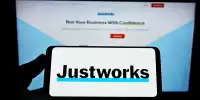When you are establishing a business, you have a million decisions to make about when to launch to time the market, whether to recruit that important job and when to get another round of funding. However, one of your most crucial timing considerations may be one you have not considered yet: when to contact the company. If you are not thinking about it right now, you are probably missing a huge opportunity. While at Greylock Partners, I worked with hundreds of startup CEOs, witnessed this again, and time again. For early-stage teams, approaching the enterprise might be intimidating.
When I recommended it, many founders balked, and I understand why: it is unsettling and may be counterintuitive. “We’re not ready,” was a familiar complaint. It is far too early. First and foremost, we aim to improve our product.” They were worried of blowing it if they talked to major corporate corporations too soon.
Contrary to popular belief, I have found the contrary to be true. You are always striving to optimize learning in the smallest loops feasible at a startup. The more information and iterations you accumulate the sooner you begin, the more useful they become. It is the same with your go-to-market strategy. I am here to tell you that you can be a product-centric startup while still wooing the enterprise.
Take, for example, slack. Slack became a can’t-live-without platform for many teams after becoming a favorite of companies across the Valley and beyond. It is a huge success by almost anyone’s standards but it is also a corporation that does not makes it a standalone public company because it was not able to break into the company on its own schedule.
Slack grew at a breakneck pace among startups, while Microsoft Teams won the large transactions. Microsoft leveraged its corporate credentials, broad distribution channels, and sheer power to prevent Slack from signing large businesses that had to adhere to established standards and infrastructure. Teams may not have had the same positive user experience, but they met businesses where they were and followed their buying criteria. What is the result? Salesforce paid $27.2 billion for Slack, which started 12 years ago.
To be clear, Salesforce’s acquisition of Slack, the largest in the company’s history, is not a negative thing. Many businesses dream of such an exit, but given the company’s darling position and immense popularity, it is unlikely to be the one it was looking for. It was a final effort to compete with Teams by leveraging Salesforce’s influence. Is it possible that Slack will have survived as an independent public business if it had contemplated selling into the firm sooner?
A bottom-up strategy to growth, such as the one championed by Slack, is terrific until it is not. Following my experience at Greylock Partners, where I assisted dozens of portfolio businesses in approaching the enterprise and now as a startup CEO, here is some advice on how to avoid typical blunders: Even before they had a product, several of the world’s most commercially successful firms collaborated with enterprise clients. The goal is to acquire information about what a consumer would like, value, and assess their product. Startups can get valuable insights that can help them shape their trajectory and get their product to market much more quickly.














